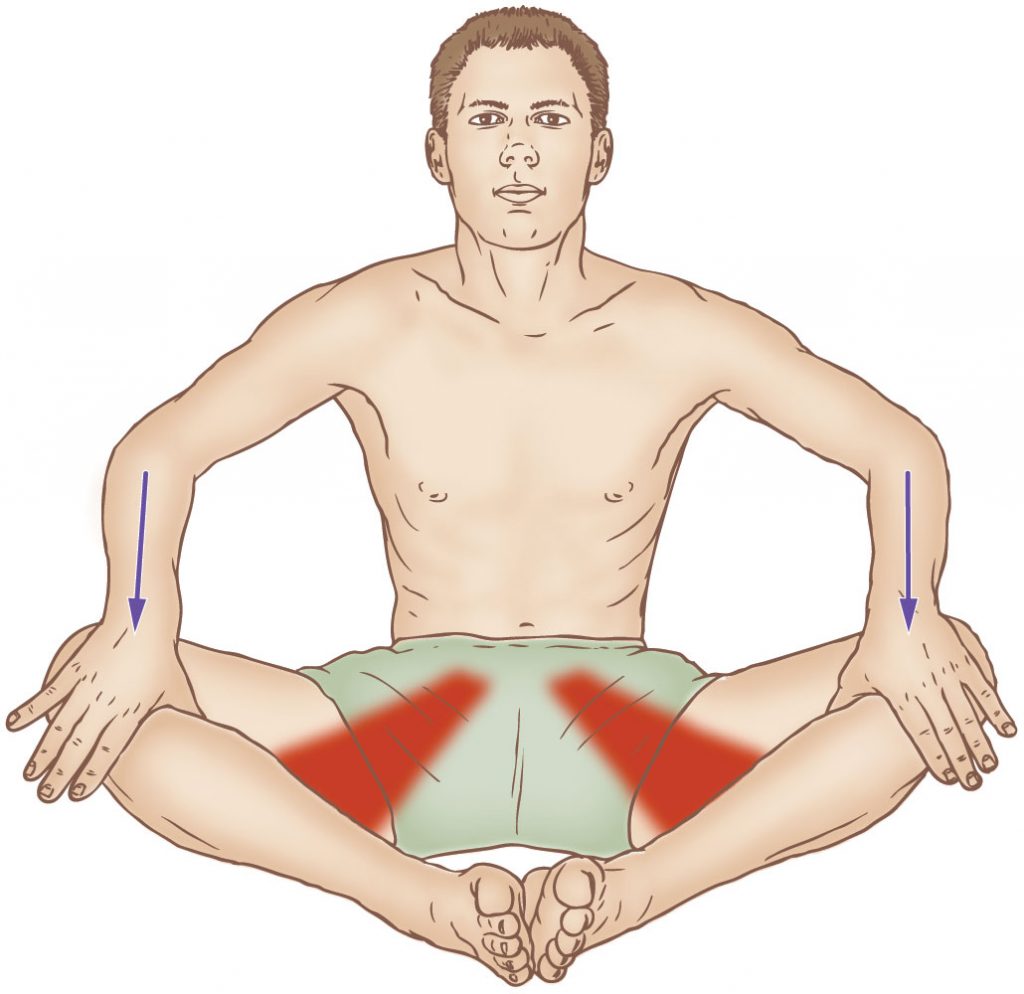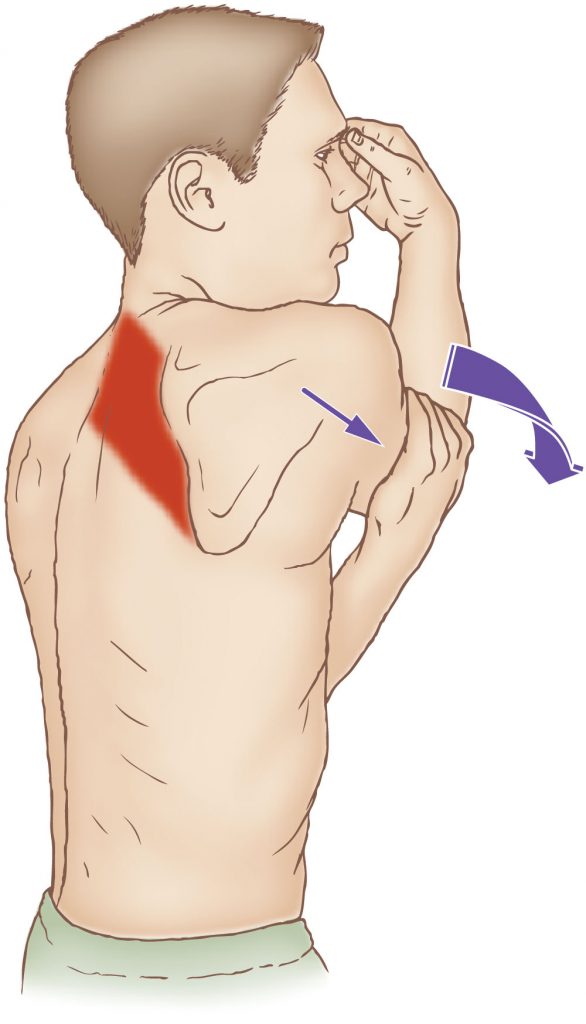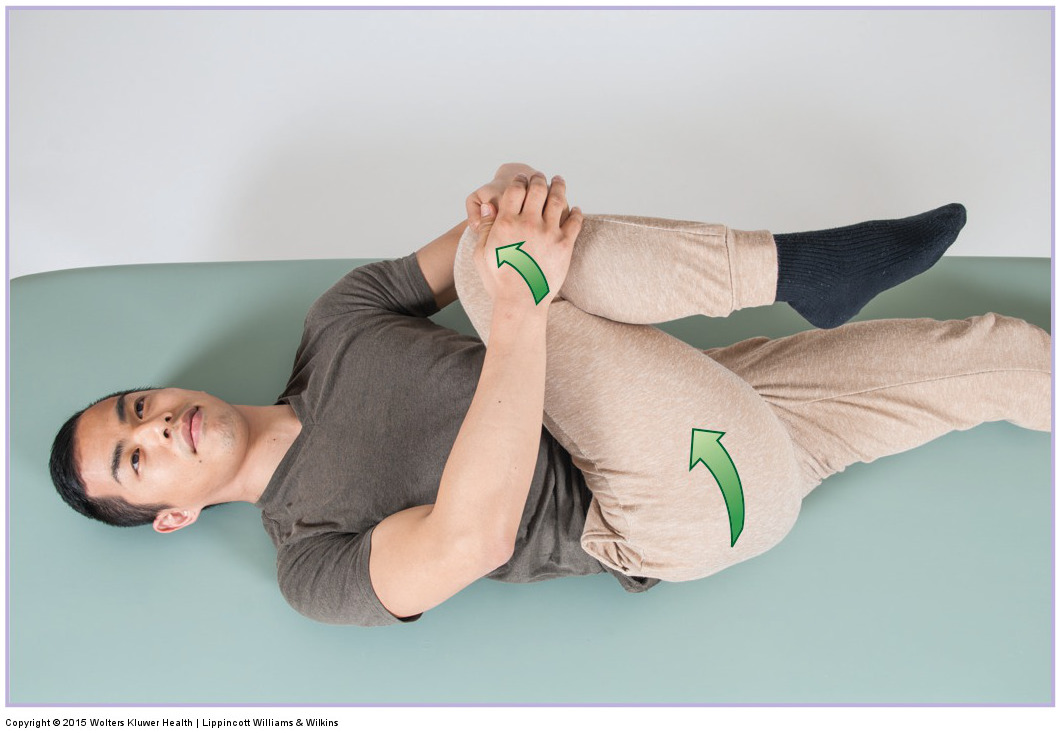Introduction

Bilateral stretching of the adductor musculature of the hip joint. Permission Joseph E. Muscolino.
It is known that stretching can have a non-local effect in distant regions of the body. For example, it has been found that stretching one side of hamstring can have a cross-over effect and increase range of motion (ROM) (i.e., flexibility) of both the ipsilateral and contralateral hip flexors. However, there is little known evidence to show whether stretching the upper body can have a cross-over effect to increase ROM of the lower body; and similarly whether stretching the lower body can have a cross-over effect to increase ROM of the upper body.
Research Study
Scientists in Canada and Brazil conducted a study to evaluate whether static stretching and dynamic stretching of the shoulder joint would have a cross-over effect upon hip joint ROM, and vice versa.
A randomized cross-over study was designed. Participants were divided into treatment/stretching groups and control groups. Stretching groups were further divided into those that performed upper body static stretching (shoulder joint horizontal abduction), lower body static stretching (hip joint abduction) upper body dynamic stretching (shoulder joint horizontal abduction and adduction) and lower body dynamic stretching (hip joint abduction and adduction).

Stretching the shoulder joint into horizontal flexion (adduction). Permission Joseph E. Muscolino.
The cross-over effect of passive static and dynamic ROM for hip joint flexion was then measured in the group that performed upper body stretching. And the cross-over effect of passive static and dynamic ROM shoulder joint extension was then measured in the group that performed lower body stretching.
Researchers also evaluated cross-over effect from upper-to-lower body and lower-to-upper body for active muscle contraction after the static and dynamic stretching was performed. Specifically, hip flexor and elbow flexor maximal voluntary contraction isometric force and fatigue endurance were measured using electromyography.
Results
Results showed that there were significant shoulder joint ROM increases following both lower body static stretching and lower body dynamic stretching (8-9 % increase). There was also a significant increase in hip joint ROM following upper body static stretching (5% increase); however no significant change in hip joint ROM was found following upper body dynamic stretching.
Further, no cross-over effect for upper-to-lower body and lower-to-upper body was found for muscle force and activation variables following static and dynamic stretching. The authors thus suggest that the improved ROM was mainly due to an enhanced stretch tolerance.
Application
A practical application of the cross-over effect of stretching for ROM flexibility elsewhere in the body is that therapists and fitness instructors and trainers can take advantage of this effect to maintain flexibility in an injured joint that cannot be directly stretched.
This blog post article was created in collaboration with TerraRosa.com.au.
(Click here for the blog post article: Static Muscle Stretching Reduces Muscle Contractile Force.)


